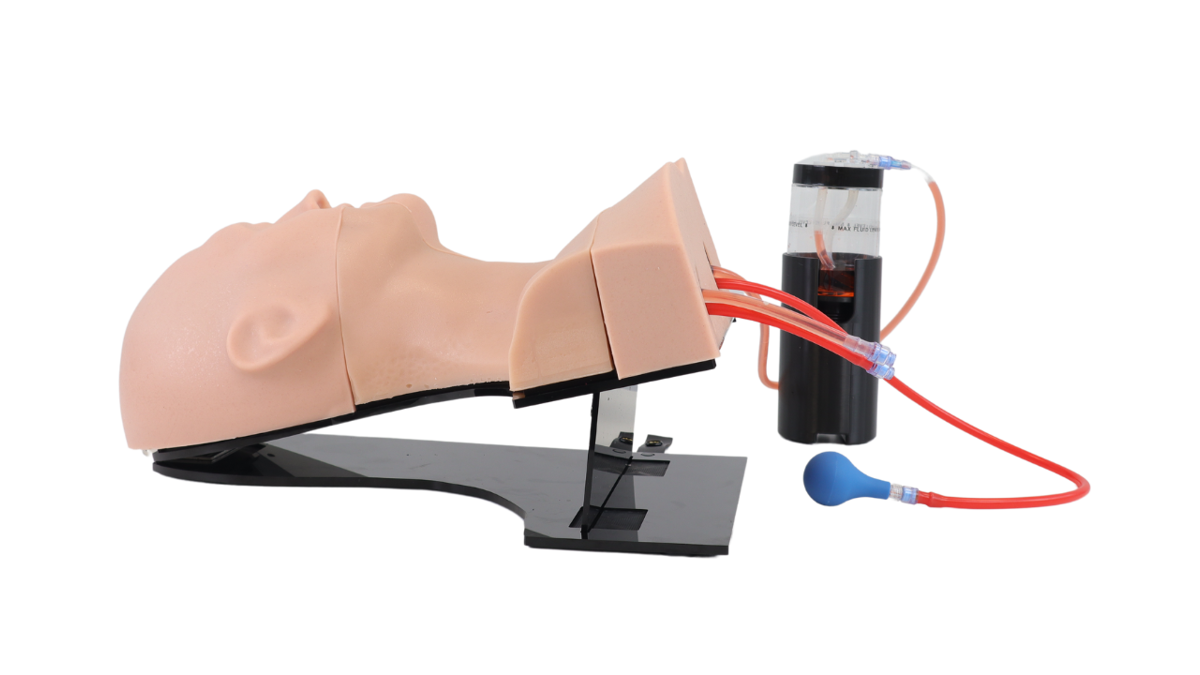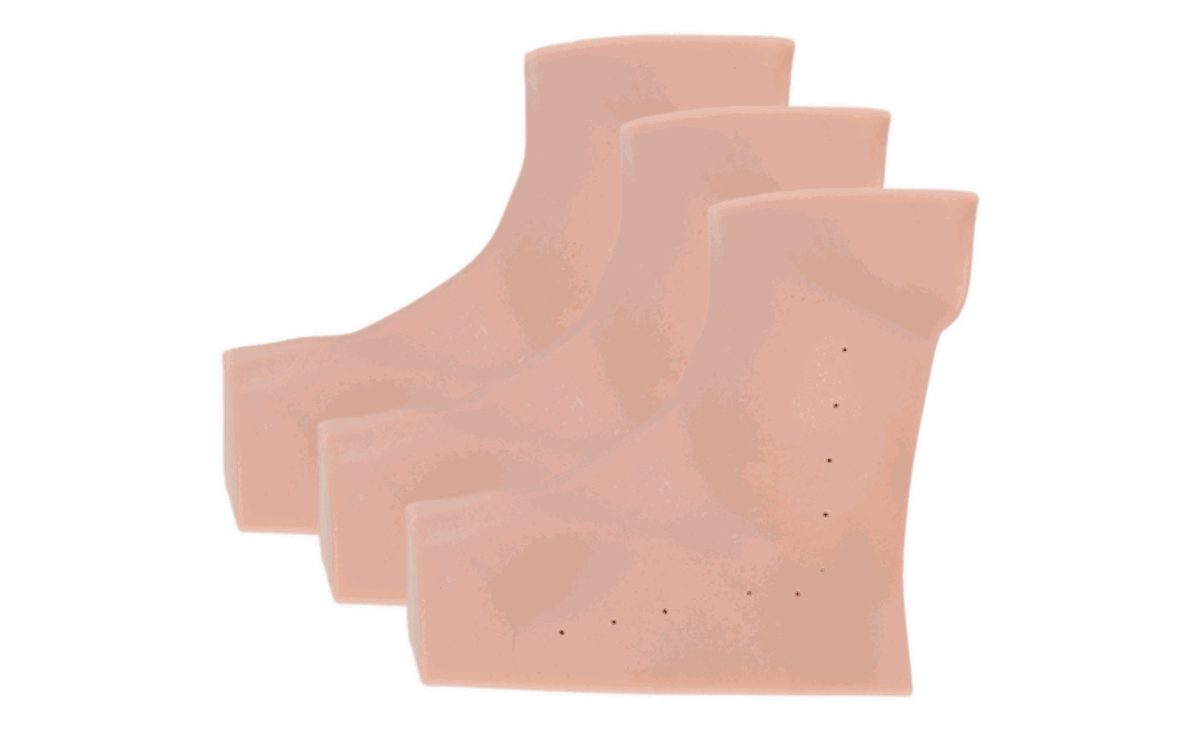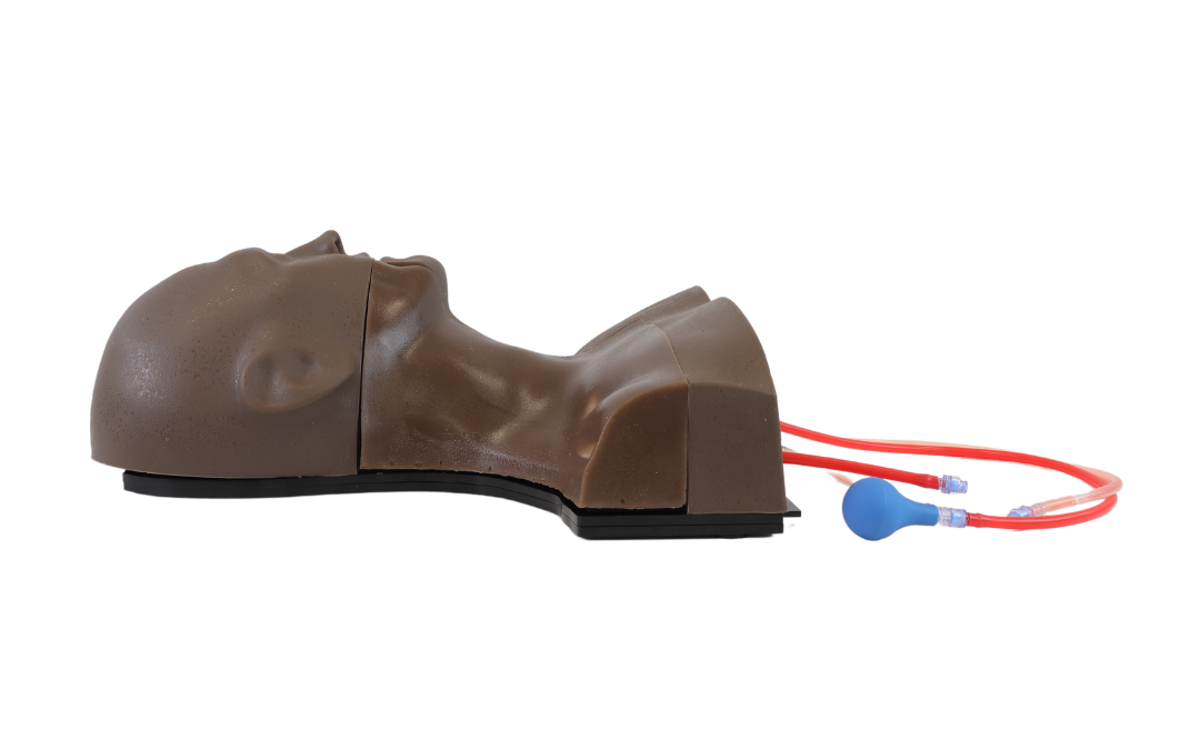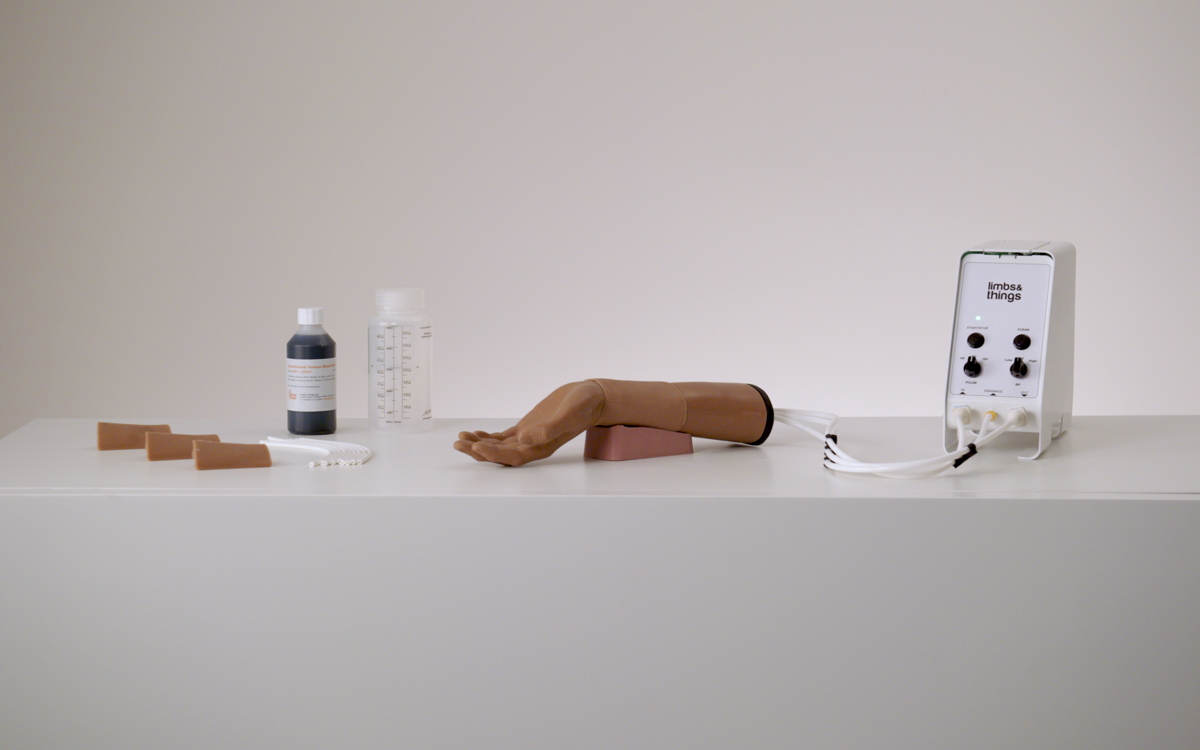












TruCVC (Light Skin Tone)
Skin Tone
Adding to cart...
Added to cart
Sorry, something went wrong adding the product to the cart.
TruCVC is the latest addition to TruCorp's ultrasound-guided task trainers, specifically designed to aid in central venous catheter (CVC) insertion.
With realistic and accurate vascular anatomy, TruCVC offers unmatched realism to aid in developing central line skills, including:
- Needle insertion
- Wire manipulation
- Catheter placement (under ultrasound guidance)
With its user-friendly base, the upper torso can be adjusted to a 15-degree angle for Trendelenburg positioning, allowing the trainer to simulate the elevation of the patient's lower limbs.
Overview
- Unmatched realism for developing central line skills
- Ultrasoundable torso module
- Simple mechanisms can be set up in under 5 minutes
Realism
- Realistic vascular anatomy
- Accurate head positioning
- Vascular tenting upon vascular access
- Arterial pulse simulation possible
- Simulator allows for withdrawal and administration of fluids
Versatility
- TruUltra material is durable for repeated use
- Adjustable base to position head for optimal positioning
- TruUltra material supports 40+ catheter insertions (20+ per site - jugular vein & subclavian vein) and 1000+ needle insertions per insert
Cleaning
- Model can be wiped with a soft damp cloth and mild detergent
- Flush tubing of simulated blood and flush with clean water
- Allow components to dry thoroughly before storing
Safety
- Do not leave needles in the trainer when not in direct use
- Do not place excessive pressure on the model, this could damage the trainer and/or the adjustable base unit
Anatomy
Clinical Anatomy:
- Upper torso and neck, adult male
- Right clavicle
- Manubrium
- First right rib
- Sternocleidomastoid muscle
Vascular Anatomy:
- Internal jugular vein
- Subclavian vein
- Carotid artery
- Subclavian artery
Skills Gained
- Correct needle positioning
- Cannulation techniques
- Trendelenburg positioning
- Fluid injection
- Blood withdrawal
- Central venous catheter placement
- Seldinger techniques
- Ultrasound techniques
Product Contains
Recommended equipment to be used with this trainer:
- 8Fr (16cm long catheter)
- 20G introducer needle
- Guidewire
- Vessel dilator
- Scalpel
- Suture kit
References
AAMC Recommendations for Clinical Skills Curricula for Undergraduate Medical Education, 2005 - Pg. 21 - Central venous catheter placement.
AAFP Reprint No.285 Recommended Curriculum Guidelines for Family Medicine Residents, Urgent and Emergent Care - Pg. 8 - 3.c Central venous access, e.g., jugular, femoral, subclavian. AAFP Reprint No.262 Recommended Curriculum Guidelines for Family Medicine Residents, Cardiovascular Medicine - Pg. 4 - 6.d Central venous and peripheral arterial catheter.
SCORE Vascular Surgery, Curriculum Outline for Vascular Surgery 2022-2023 - Pg. 7 - Hemodialysis access catheter. SCORE Curriculum Outline for General Surgery 2012-2014 - Pg. 16 - Venous access devices insertion.
Royal Australian College of General Practitioners, Curriculum Diploma of Pre-Hospital and Retrieval Medicine - Pg. 9 - Central venous access.
Health Workforce Australia Medical Graduate Competency Framework Stage 2, Final Report, August 2012, Appendix D - Pg. 31 - Insertion of a central venous line.
ANZCA Anaesthetisia Training Program Curriculum V1.12 - Pg. 73 - Central venous cannulation by the jugular, subclavian and femoral routes. ANZICS: Central Line Insertion and Maintenance Guideline 2012.
Australasian College of Emergency Medicine, Curriculum 2022 - Pg. 43 - 3.16, j. Insertion of a central venous line.
The Royal College of Emergency Medicine - Pg. 24 & 82 - "Central venous access"
The Royal College of Anaethestists - Pg. 174 - "Management of external and internal implantable drug delivery systems, both peripheral and central, for the management of cancer pain". Pg. 188 - "Central venous line insertion".
Intensive Care Medicine Curriculum - Pg. 63 - "Utilising central venous access where required".
Curriculum for Internal Medicine Stage 1 - Pg. 31 - "Central Venous Cannulation (Internal Jugular or Subclavian)". Pg. 36 - "To develop enhanced procedural skills such as placement of central venous catheters."
Vascular Surgery Curriculum, The Intercollegiate Surgical Curriculum Programme - Pg. 45 - "To utilise imaging to insert un-tunnelled central venous catheters."
How often do I need to replace the ultrasound insert?
The ultrasound insert facilitates 40+ full catheter insertions including use of a dilator (20+ full insertions per site - Jugular vein & Subclavian Vein) using the recommended equipment sizes and 1000+ needle penetrations. Avoid using a dilator for each insertion, and avoid use of a scalpel for extending life of insert.
Why can I visualise the veins clearly?
Poor quality ultrasound images are caused by air inside the blood. To improve the image, insert more blood into the jugular, subclavian, common carotid. Approximately 50ml (veins) and 20ml (arteries) should be sufficient.




















